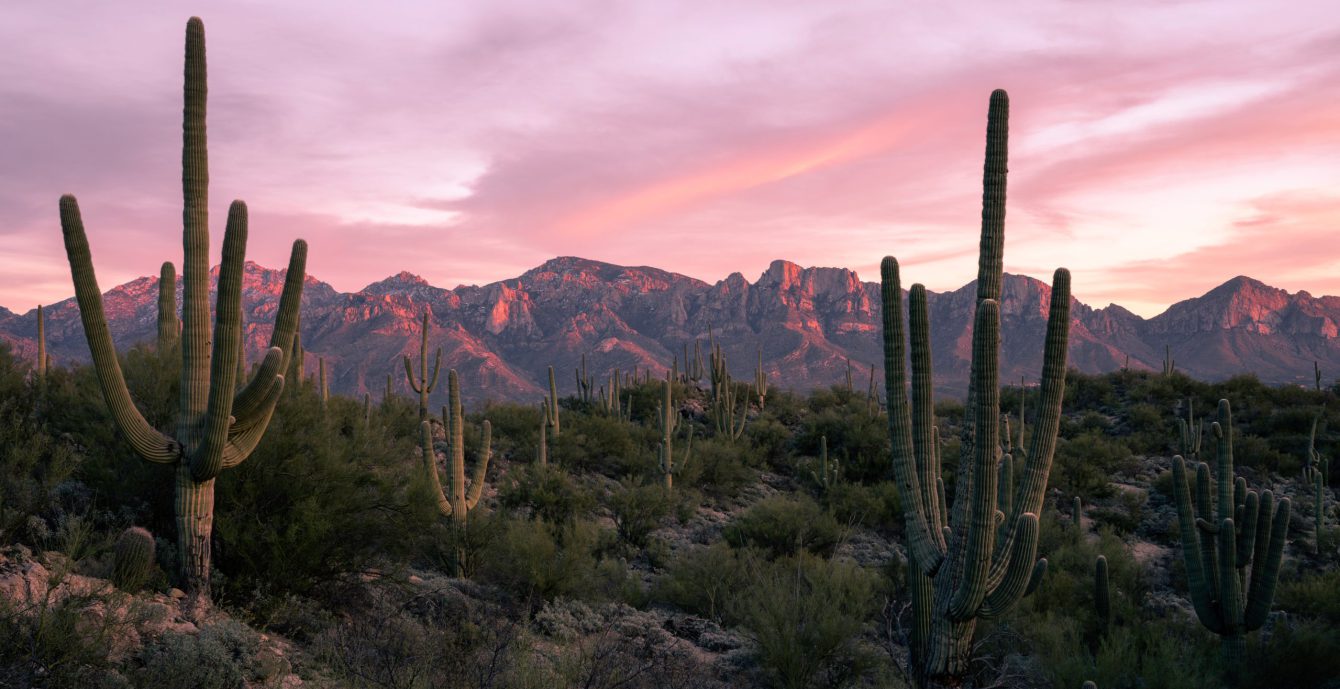Explore Tucson
For the day after the conference, Saturday Sep. 28, we are considering an excursion, provided enough people are interested. We can do a brief excursion on Saturday morning, which would end around 11:30 am, so that everyone can be at the airport (Tucson International) around 1:00 pm. Alternatively, we could do a daylong excursion, which however would require participants to stay one day longer (until Sunday).
[Update August 19, 2024: If generally preferred, Option I could also be done earlier, so that everyone could be at the airport (TIA) around 11:00 am.]
If you are interested in any of the three options listed below, please let us know by completing the Excursion Interest Form.
Excursion Option 1: Saguaro Photo Op. A very simple excursion, which nevertheless might be interesting for people who haven’t been to Tucson before, would be to drive to the place where the photos for the following slide show (with sound) were taken. There wouldn’t be enough time for hiking, just for a brief (maybe 30 minute) photo-op.
Excursion Option 2: Sabino Canyon. Another ‘easy’ option for people who don’t want to spend an additional night in Tucson, but whose flight departs in the afternoon on Saturday, would be to visit Sabino Canyon on Saturday morning. This is a recreational area less than 3 miles from the conference hotel. The area offers a 1-hour tram/shuttle ride. Conference participants who are not familiar with Tucson and the Desert Southwest can get a good impression of the desert and see some large Saguaro cacti (but the chance of seeing a Gila Monster is much better during a hike than a tram ride).
Excursion Option 3: Kitt Peak Observatory. Another possibility for a Saturday excursion would be the Kitt Peak National Observatory, “…one of the largest gatherings of astronomical instruments in the Earth’s northern hemisphere…” (quote from Wikipedia). However, this would be a full-day excursion and require staying one more night (until Sunday).
Again, if you are interested in any of the three options listed above, please let us know by completing the Excursion Interest Form.
Additional useful links:
Learn more about Tucson. At this link, you can find more information about Mexican Food, local attractions, outdoor activities, restaurants, hotels, and events. And here is another link that we recently found on YouTube.
The magazine Outside has included the greater Tucson area in The 23 Best Places to Travel in 2024.
If you decide to go hiking in the Tucson area, for your own safety, please observe available hiking tips and safety guidelines. Hiking in hot weather can be dangerous, and additionally there is a wide variety of wildlife in and around Tucson. Some tips and guidelines can be found at the following links, but everyone is different, so please prepare any outdoor activities according to your own situation.
Hiking Safety Information. This link points out that, among other things, you should be drinking 1 quart of water per hour of hiking.
Hiking Safety. This link contains additional tips and information.
Hike safely in bear country. This link provides general information about bears. There are black bears, but no grizzly bears in the Tucson area.
Learn more about the Arizona-Sonora Desert Museum, a fusion of “zoo, botanical garden, art gallery & classes, natural history museum, and aquarium”, which “features two miles of walking paths traversing 21 acres of desert landscape.”
Learn more about the Richard F. Caris Mirror Lab, where, among other things, 8.4 meter mirrors for the Giant Magellan Telescope in Chile are produced.
Learn more about the Wyant College of Optical Sciences.
Learn more about the University of Arizona.

